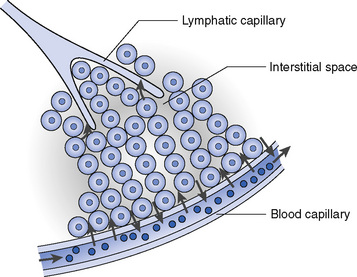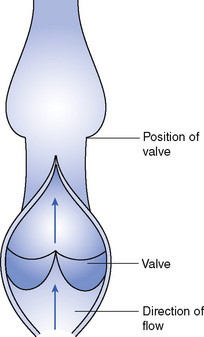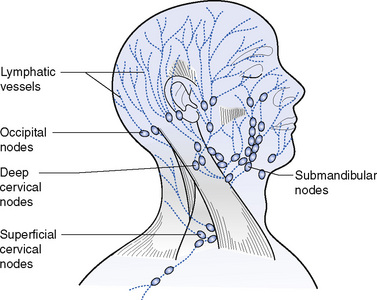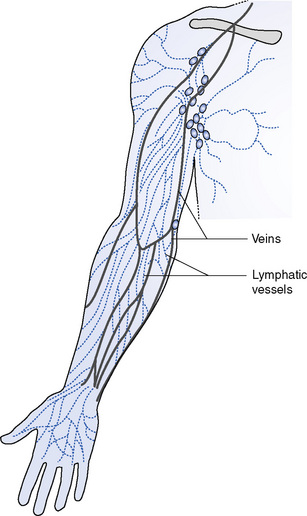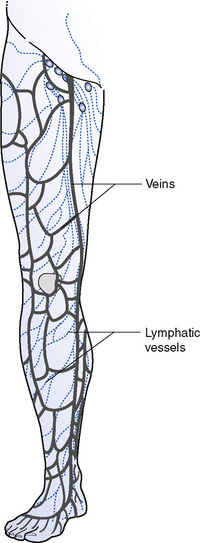16 The lymphatic system
As blood passes through the capillaries in the tissues, fluid oozes out through the porous walls and circulates through the tissues, bathing every cell. This fluid is called tissue or interstitial fluid; it fills the interstices or the spaces between the cells that form the different tissues (Fig. 16.1). It is a clear, watery, straw-coloured fluid similar to the plasma of the blood from which it is derived. While blood circulates only through the blood vessels, tissue fluid circulates through the actual tissue and carries nutrients, oxygen and water from the blood stream to each individual cell and carries away its waste products such as carbon dioxide, urea and water, transmitting them to the blood. It is, in other words, the carrying medium between the tissue cells and the blood.
The components of the lymphatic system
The lymphatic system comprises four types of structure:
Lymphatic vessels
The lymphatic vessels are thin-walled, collapsible tubes similar in structure to the veins but carrying lymph instead of blood. They are finer and more numerous than the veins and, like them, are provided with valves to prevent the lymph moving in the wrong direction (Fig. 16.2). Lymphatic vessels are found in most tissues except the central nervous system but run particularly in the subcutaneous tissues and pass through one or more lymphatic nodes (Figs 16.3–16.5).
< div class='tao-gold-member'>
Stay updated, free articles. Join our Telegram channel

Full access? Get Clinical Tree


